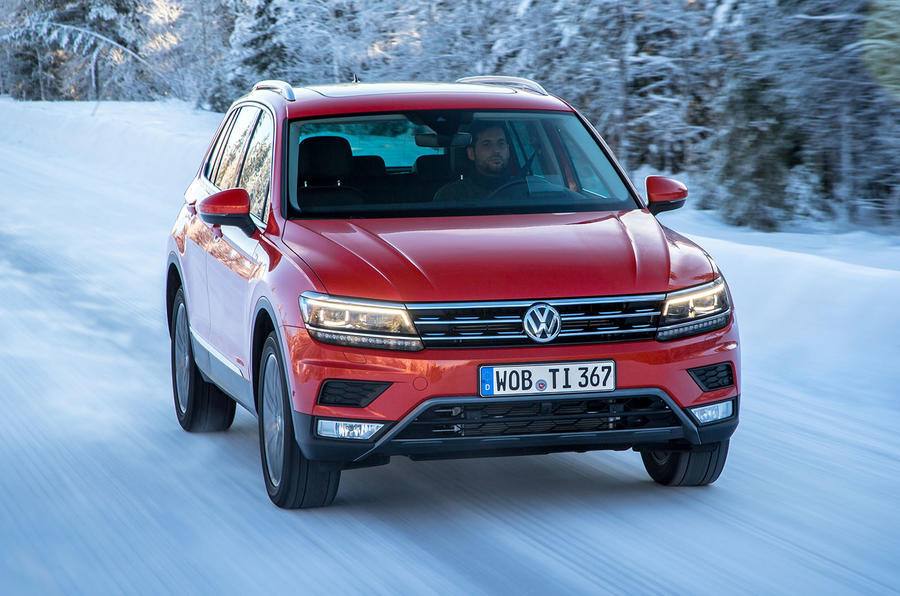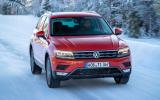What is it?
The second-generation Volkswagen Tiguan is the first all-new model to emerge from the German car-making giant since it became embroiled in the diesel emissions scandal that has led to the recall of more than 11 million cars worldwide.
First revealed at the Frankfurt motor show last September, the neatly styled SUV represents a big break from its highly successful predecessor, not only terms of appearance and engineering but also positioning and ambition.
Having recorded a healthy 2.6 million sales worldwide with the first-generation model since its introduction back in 2007, Volkswagen has decided to expand the range second time around in a bid to extend the reach of the Tiguan into new and potentially lucrative market segments already occupied by various SUV competitors.
The standard five-seat model driven here is just one of three new Tiguan derivatives set to join the Volkswagen line-up in the next two years.
A seven-seat long-wheelbase variant as well and a more sportingly styled coupé are also under development and planned to reach showrooms in 2017 and 2018 respectively, although there remains a question mark over whether the seven-seater will make it to the UK. The Tiguan coupé, however, is a certainty.
Video
The standard-wheelbase Tiguan has put on 60mm in length and 30mm in width, while in four-wheel-drive guise as driven here, it is a scant 22mm lower than before.
The new Volkswagen will be offered from the start of UK sales with the choice of two turbocharged 2.0-litre four-cylinder engines, although others are planned to follow as production of the second-generation model is ramped up at Volkswagen’s main factory in Wolfsburg, Germany.
Included among the launch line-up, and tested here, is VW’s familiar 2.0 TSI petrol unit, delivering a peak of 178bhp along with 236lb ft between 1500 and 3950rpm.
As with the first-generation model, though, the majority of UK customers are likely to opt for Volkswagen’s widely used diesel engine, which will initially come in just one state of tune, producing 148bhp and 251lb ft in the 2.0 TDI SCR and 2.0 TDI SCR 4Motion.
As their model name suggests, all new diesel powered Tiguan models come fitted with a so-called selective catalytic reduction (SCR) filter to help rein in nitrous oxide emissions. It necessitates the inclusion of a 12-litre tank housing the AdBlue solution used in the exhaust gas filtration system mounted at the rear underneath the boot.
The initial petrol engine comes mated to a seven-speed dual-clutch automatic gearbox and comes with four-wheel drive as standard, while the diesel is available with either a standard six-speed manual gearbox or the seven-speed dual-clutch unit, along with the choice of either front or four-wheel drive.
Read our full review of our first generation Volkswagen Tiguan
In 2015, some three-quarters of all Tiguans sold in the UK were four-wheel drive, so it seems smart to offer both the petrol and diesel engine models with it as standard from the beginning.































Join the debate
Add your comment
family SUV, really ???
I digress, the Tiguan was no different in user experience than i had previously experienced, it didnt feel much bigger than a polo inside.. then the salesman showed me the boot. I would hope the proportions have increased since then but I had to laugh, when questioning the practicality of the space, when the salesmen suggest the best solution for my 4 person family was to fold one of the back seats down.. I suspect this may be bigger but there is little about a Tiguan that relates to practicality. Ive had a santa fe 7 seater that had much less space than the 5 series that came before it ... maybe i just dont get SUVs but back to my point, is this really a family SUV ... i doubt it Q3 competitor at best..
Premium
Theory of relatives